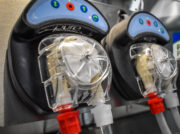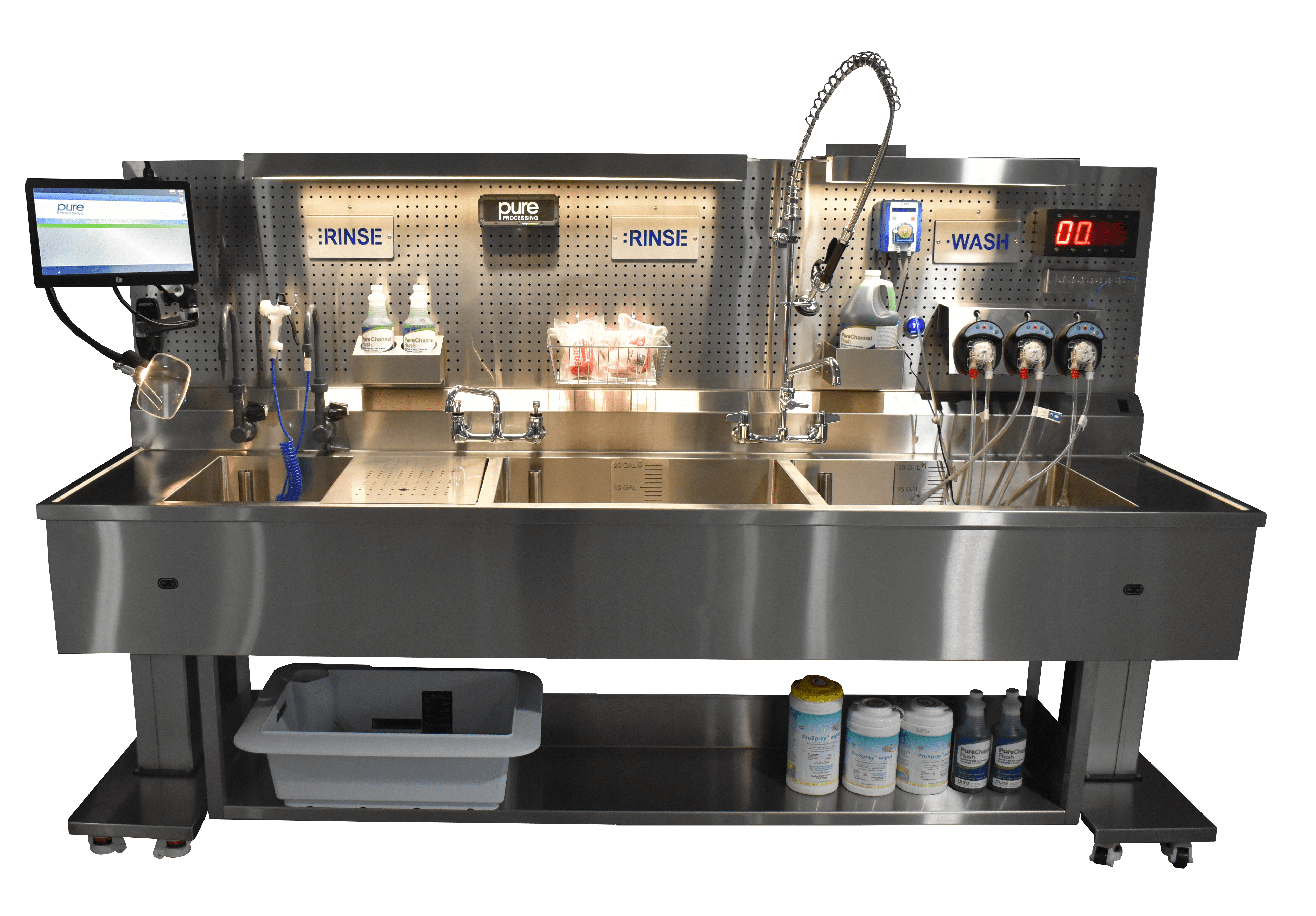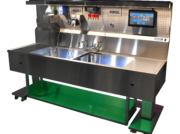
The Importance of Leak Testing at the Decontamination Sink
Leak testing isn’t just a box to check in sterile processing and GI departments. It’s a frontline defense for patient safety. When working with flexible endoscopes or intraoperative ultrasound probes, ensuring their internal integrity is intact is critical. That integrity check starts at the decontamination sink.
Why Leak Testing Matters
A compromised instrument, such as a flexible endoscope with a pinhole or tear, cannot be reliably cleaned or disinfected. Fluids can enter internal components which harbor bioburden and expose patients to infection risks. Leak testing helps detect these issues before endoscopes and probes move further along the reprocessing workflow. This prevents costly repairs, cross-contamination, and possible infections.
Missed or failed leak tests can lead to serious consequences. Internal fluid invasion often results in damage to critical components like image bundles, light fibers, or angulation systems. According to industry data, fluid invasion is one of the leading causes of endoscope failure. Repair costs can easily range from several thousand dollars to full endoscope replacements. Worse, undetected damage can lead to retained bioburden, putting patients at direct risk of infection.
What Should Happen at the Decontamination Sink?
At the decontamination sink, leak testing is one of the first steps after point-of-use treatment and transport. The process typically includes:
• Connecting the endoscope to an automated or manual leak testing device
• Submerging the instrument in clean water within a designated basin
• Observing for bubbles (which indicate a leak) while gently flexing or articulating the scope
Every leak test must be performed with full attention and precision. There is no room for shortcuts. Missing a leak means risking patient safety. Leak testing is also not optional. It is a critical safety check that protects patients and prevents harm.
How the Sink Environment Supports Leak Testing
The design of your decontamination sink can support or hinder effective leak testing.
Features that make a difference include:
• Integrated basin lights to help illuminate water for clearer visual inspection, ensuring even the smallest bubbles aren’t missed
• Proper basin depth and size to ensure full submersion without crowding
• Built-in timers or workflow prompts to reinforce proper soaking and testing times
When Should You Leak Test?
Most IFU require leak testing before any brushing or flushing begins, right at the start of manual cleaning. This ensures that any internal damage is identified before fluid can enter the device. The results of the leak test will determine how the next steps in the process will occur. A failed test should immediately halt reprocessing and send the scope for repair.
As emphasized in ANSI/AAMI ST91, Section 7.4.1, leak testing should be performed as soon as possible after the endoscope arrives in the processing area and before immersion into any solutions. Critically, “leak testing can detect damage to the endoscope that could, if undetected, allow for fluid invasion into areas not designed for fluids and pose a potential risk of cross-contamination.” These fluids can include water, chemicals, and biological matter that accumulate from the time the breach occurs until it is identified. 1
This highlights why leak testing is one of the most important safety checkpoints in the reprocessing cycle. It helps prevent cross-contamination, protects patient safety, and reduces the risk of internal instrument damage.
Common Pitfalls to Avoid
A couple common areas where leak testing processes fail include:
• Skipping it completely due to time constraints or backlogs
• Performing leak testing after brushing, which increases the risk of fluid ingress
• Using basins with poor visibility or failing to fully submerge the insertion tube
• Not flexing the scope during testing, which may cause leaks to go unnoticed
• Triggering a false fail result due to improper connections, residual air bubbles, or overly aggressive articulation
• Flexible endoscopes that cannot be leak tested should not be used.1
Building Leak Testing into a Culture of Safety
Leak testing is a small step that has a big impact. Facilities that prioritize it often pair
technician training with visual reminders at the sink, use designated tools or testing areas, and monitor compliance. Creating a culture where every technician understands the reason behind leak testing strengthens the entire chain of reprocessing.
Leak testing at the sink is not just a procedural requirement. It is a critical patient safety checkpoint. With the right equipment, training, and habits, sterile processing departments can catch damage early and protect both their patients and their scopes. When done consistently and correctly, leak testing helps avoid costly repairs, scope downtime, and most importantly, patient harm.
Works Cited
1. ANSI/AAMI ST91:2021





